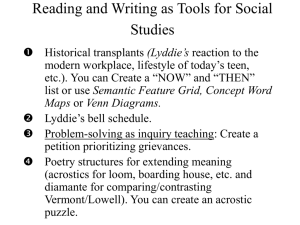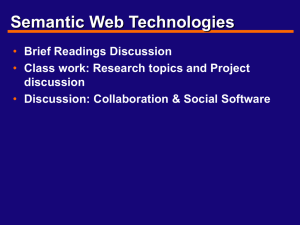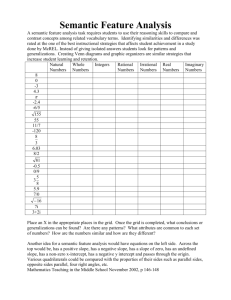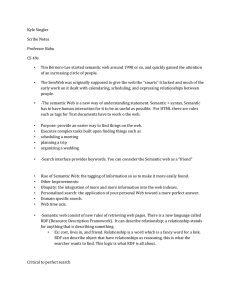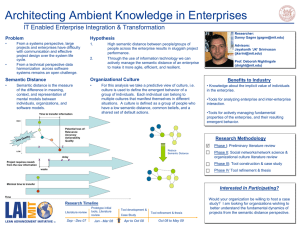Semantic Feature Analysis
advertisement
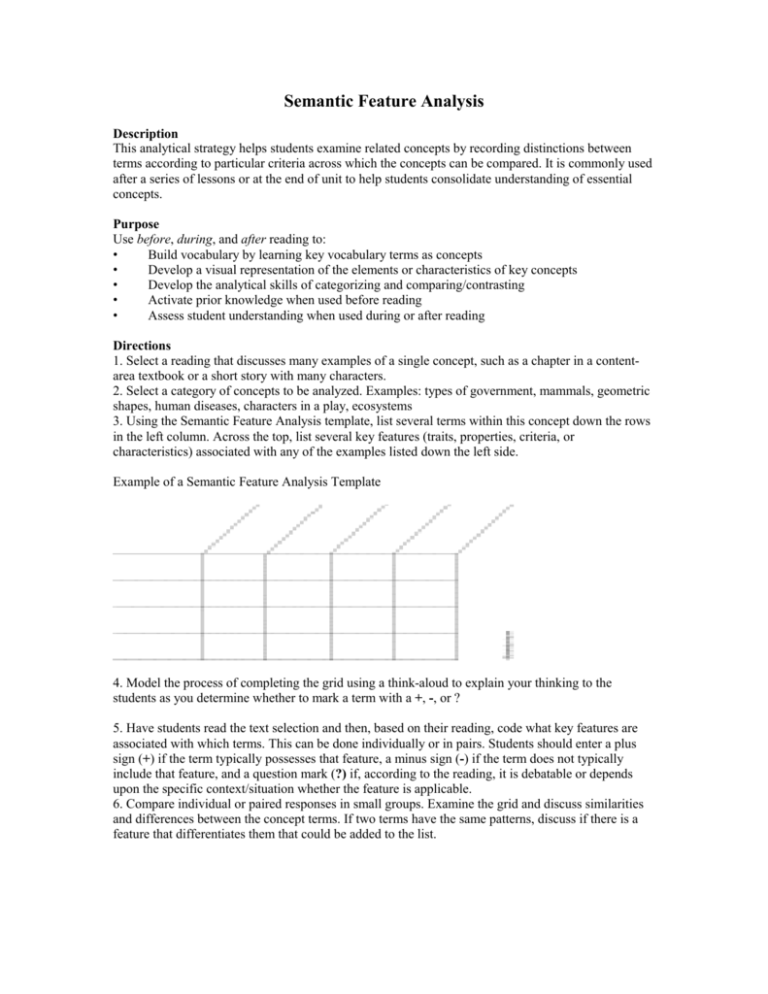
Semantic Feature Analysis Description This analytical strategy helps students examine related concepts by recording distinctions between terms according to particular criteria across which the concepts can be compared. It is commonly used after a series of lessons or at the end of unit to help students consolidate understanding of essential concepts. Purpose Use before, during, and after reading to: • Build vocabulary by learning key vocabulary terms as concepts • Develop a visual representation of the elements or characteristics of key concepts • Develop the analytical skills of categorizing and comparing/contrasting • Activate prior knowledge when used before reading • Assess student understanding when used during or after reading Directions 1. Select a reading that discusses many examples of a single concept, such as a chapter in a contentarea textbook or a short story with many characters. 2. Select a category of concepts to be analyzed. Examples: types of government, mammals, geometric shapes, human diseases, characters in a play, ecosystems 3. Using the Semantic Feature Analysis template, list several terms within this concept down the rows in the left column. Across the top, list several key features (traits, properties, criteria, or characteristics) associated with any of the examples listed down the left side. Example of a Semantic Feature Analysis Template 4. Model the process of completing the grid using a think-aloud to explain your thinking to the students as you determine whether to mark a term with a +, -, or ? 5. Have students read the text selection and then, based on their reading, code what key features are associated with which terms. This can be done individually or in pairs. Students should enter a plus sign (+) if the term typically possesses that feature, a minus sign (-) if the term does not typically include that feature, and a question mark (?) if, according to the reading, it is debatable or depends upon the specific context/situation whether the feature is applicable. 6. Compare individual or paired responses in small groups. Examine the grid and discuss similarities and differences between the concept terms. If two terms have the same patterns, discuss if there is a feature that differentiates them that could be added to the list. English Language Arts After reading narrative, epic, humorous, dramatic, ballad, free verse, and lyric forms of poetry Mathematics During reading of trigonometry text chapter on triangles Science Before, during, and after reading about systems of the body Social Studies Before, during, and after reading about economic systems in various countries and their impacts on the average citizen



